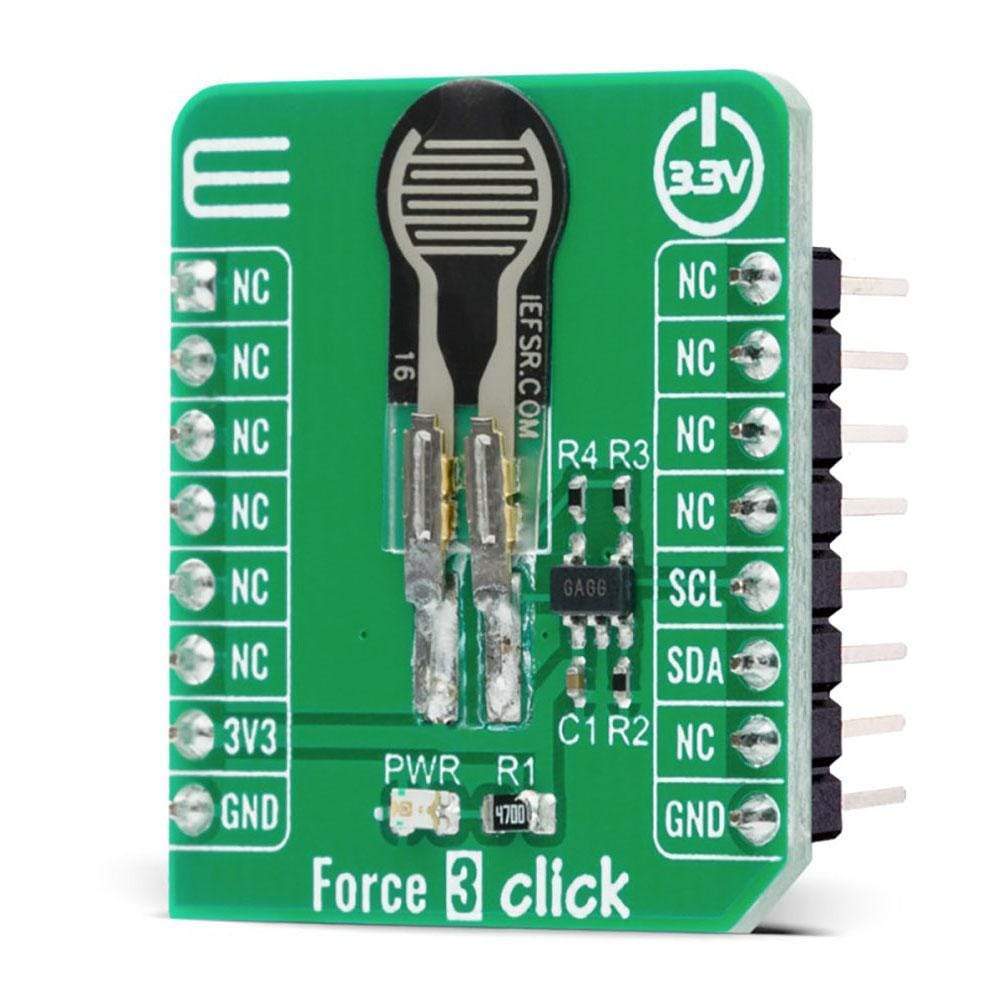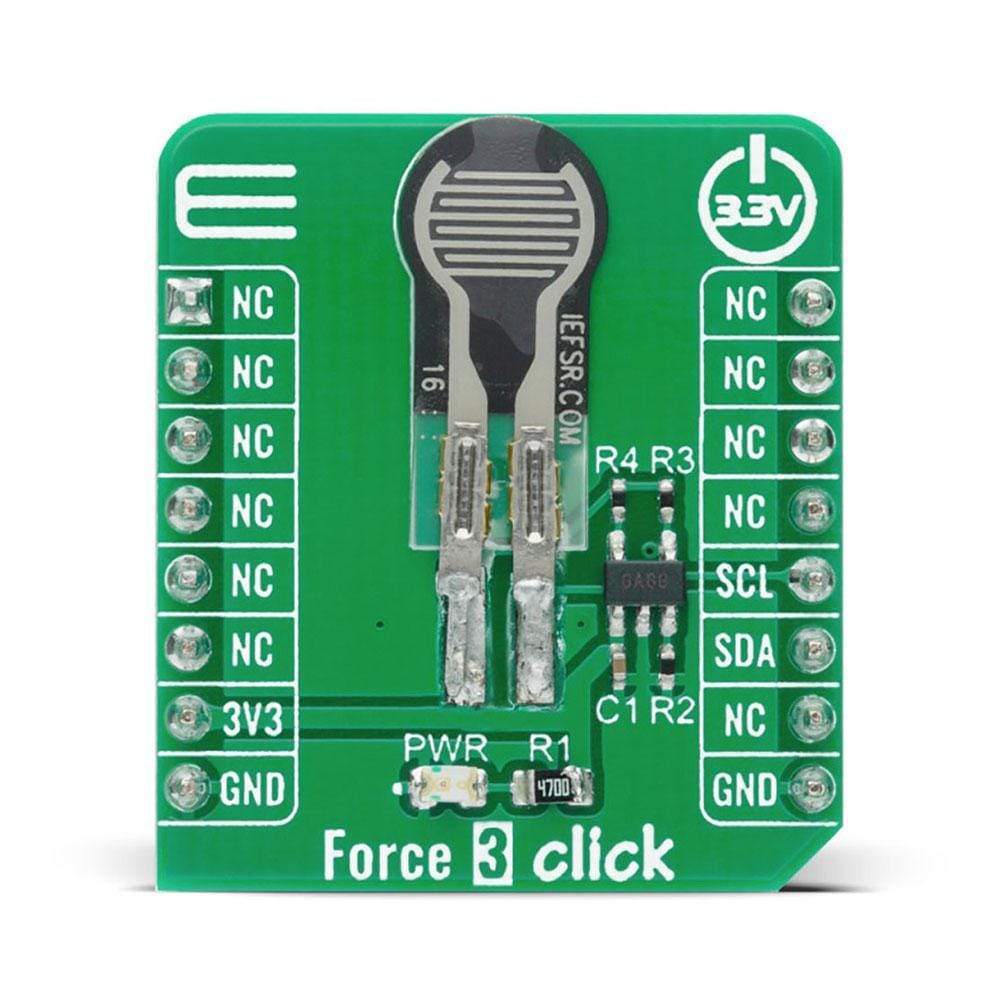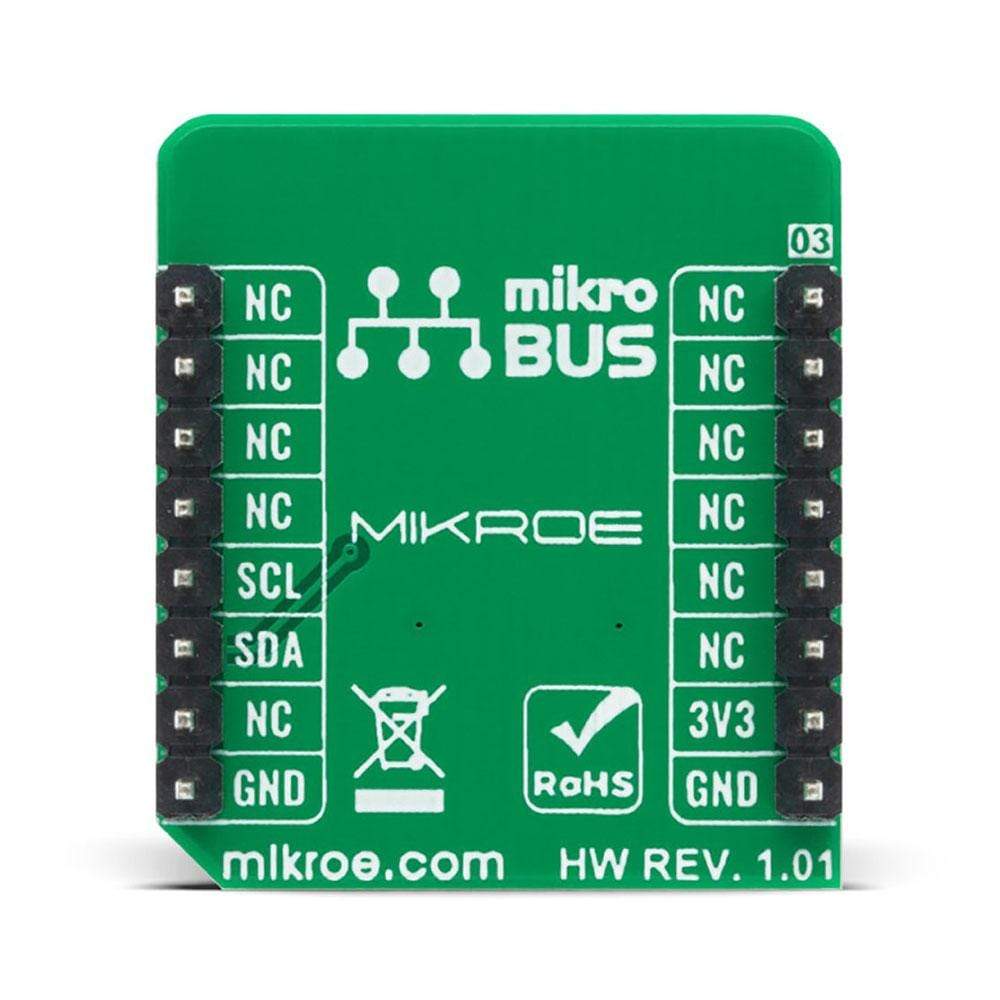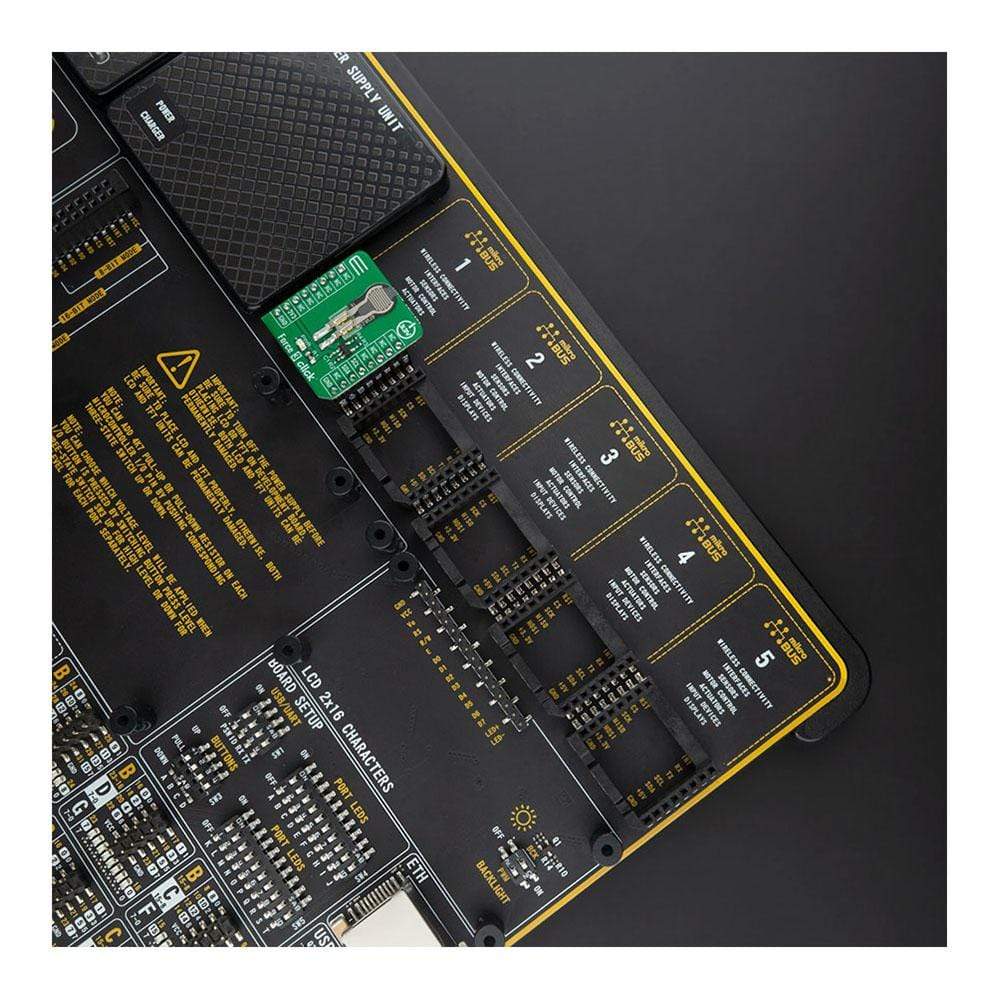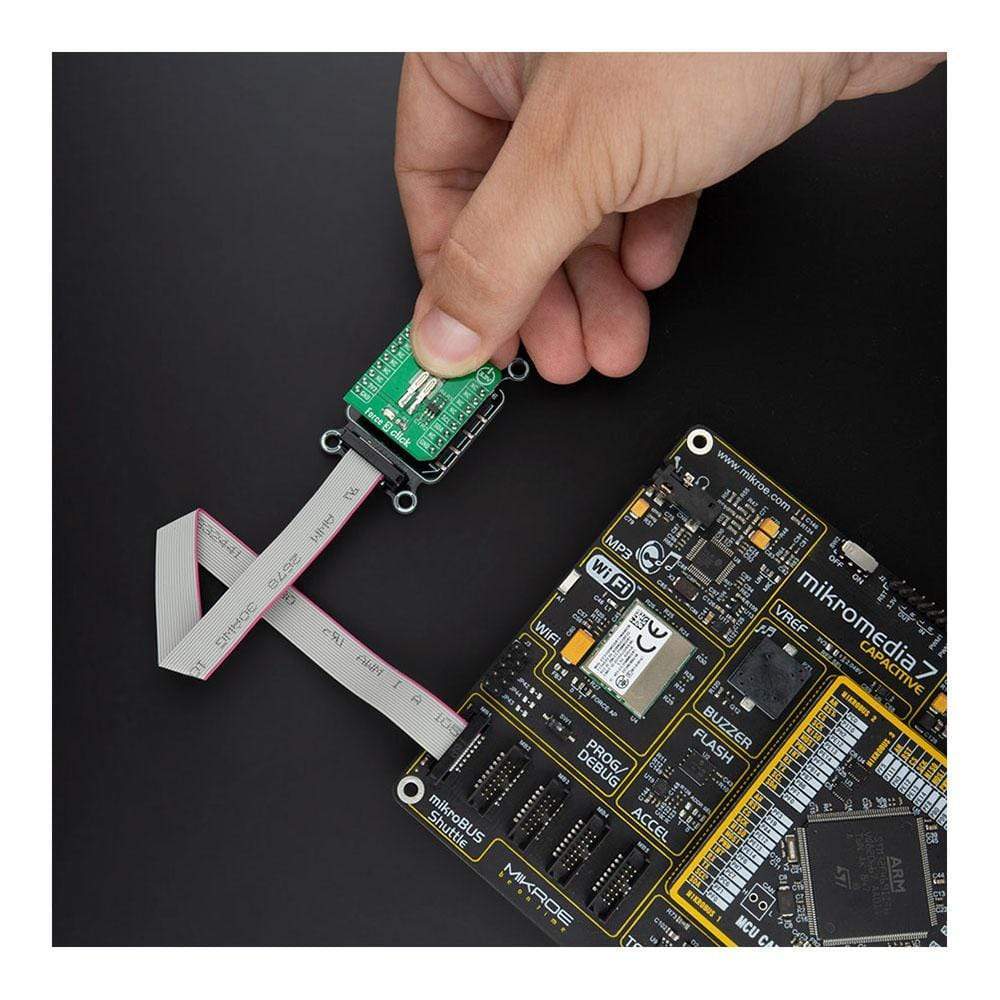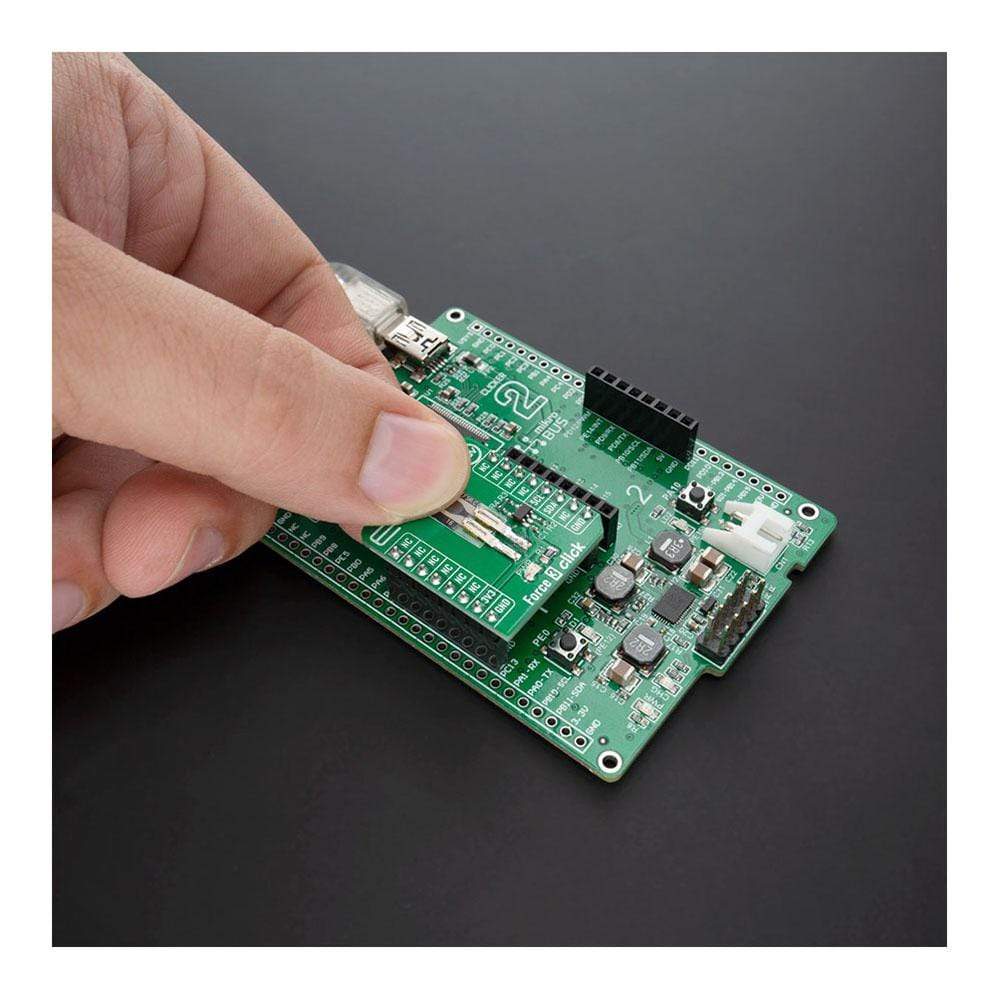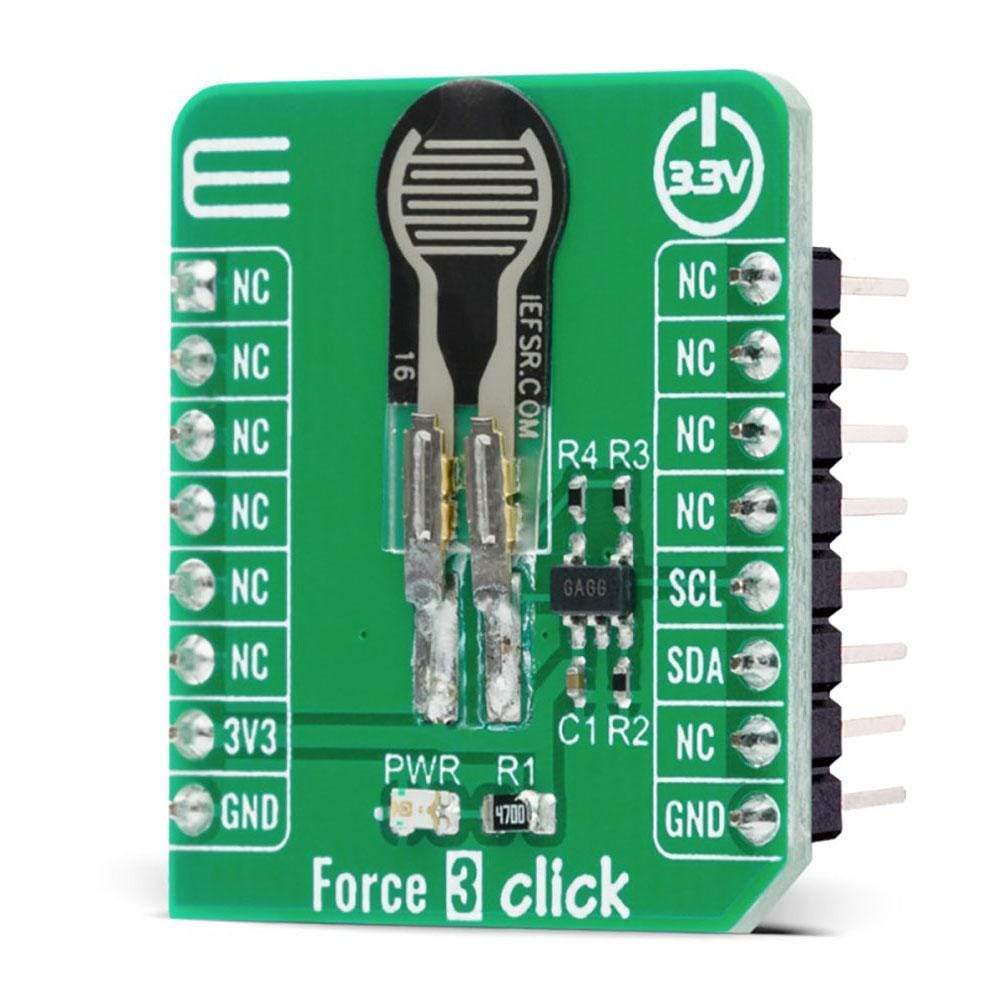
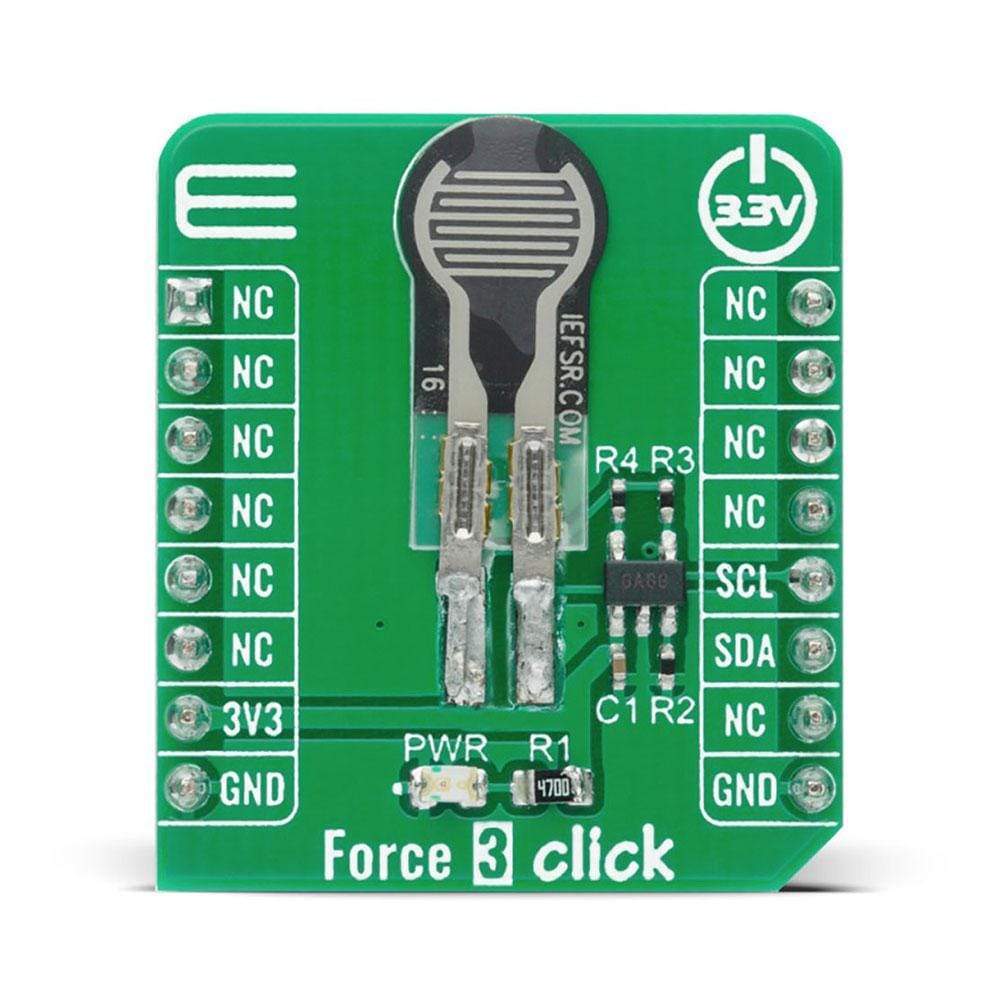
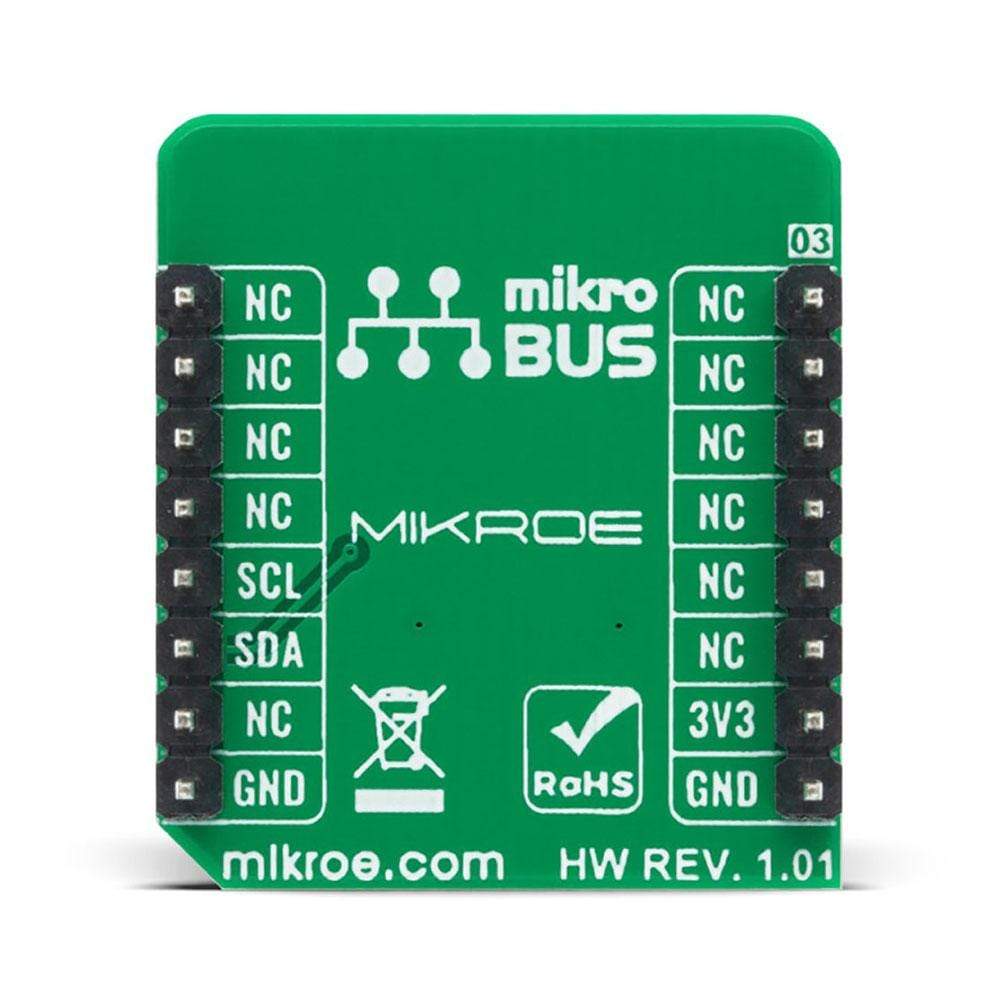
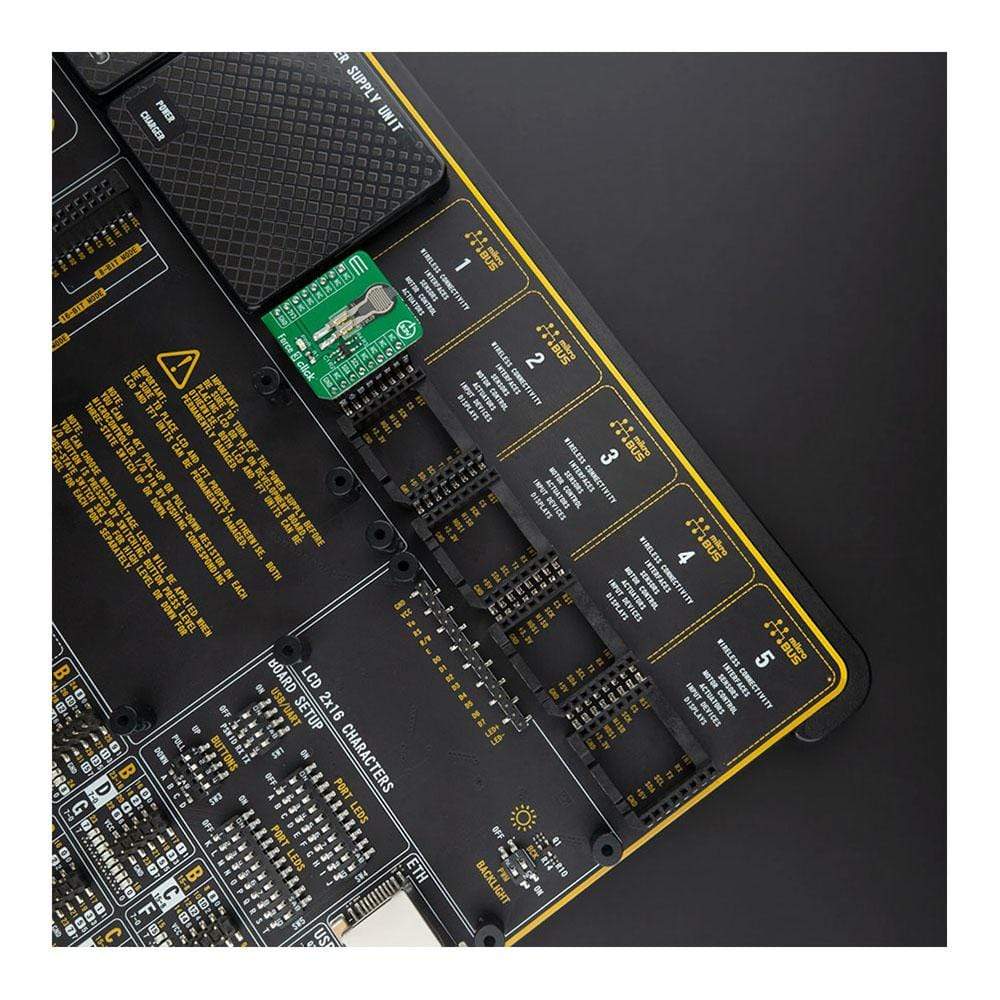


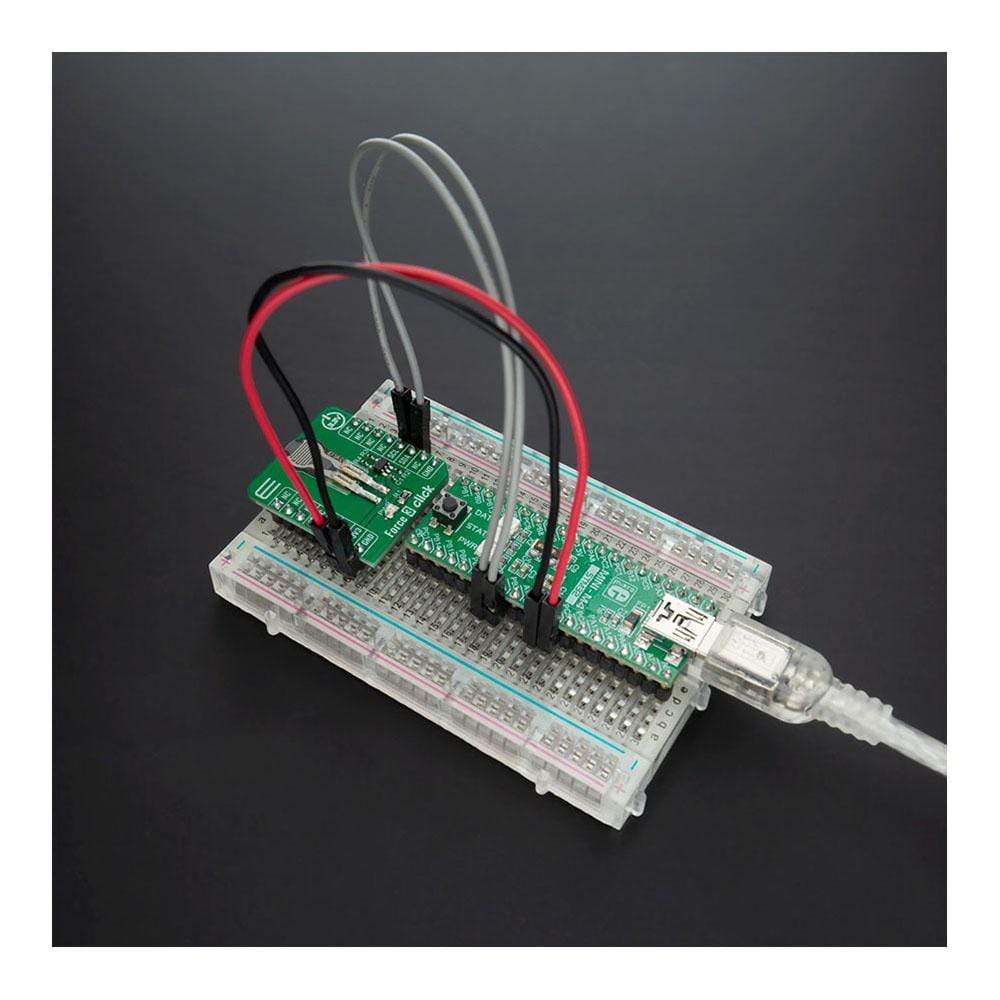
Overview
The Force 3 Click Board™ is a compact add-on board with circuitry for implementing Force Sensing Resistor into your projects whose resistance changes when a force, pressure, or mechanical stress is applied. This board features an FSR 400 series 34-00004 single zone Force Sensing Resistor from Interlink Electronics, a robust polymer thick film (PTF) device that exhibits a decrease in resistance with an increase in force applied to the surface of the sensor. Simple and easy to integrate, ultra-thin, and cost-effective, Force 3 Click has an actuation force as low as 0.2N and a sensitivity range up to 20N. It also provides a 2-Wire I2C compatible control interface using an MCP3221, low-power 12-bit resolution A/D converter. This Click Board™ is optimized for use in human-machine interface devices including automotive electronics, medical systems, industrial controls and robotics.
The Force 3 Click Board™ is supported by a mikroSDK compliant library, which includes functions that simplify software development. This Click Board™ comes as a fully tested product, ready to be used on a system equipped with the mikroBUS™ socket.
Downloads
Das Force 3 Click Board™ ist eine kompakte Zusatzplatine mit Schaltkreisen zur Implementierung eines Force Sensing Resistor in Ihre Projekte, dessen Widerstand sich ändert, wenn eine Kraft, ein Druck oder eine mechanische Belastung ausgeübt wird. Diese Platine verfügt über einen Einzelzonen-Force Sensing Resistor der FSR 400-Serie 34-00004 von Interlink Electronics, ein robustes Polymer-Dickschichtgerät (PTF), dessen Widerstand bei zunehmender auf die Oberfläche des Sensors ausgeübter Kraft abnimmt. Force 3 Click ist einfach und leicht zu integrieren, ultradünn und kostengünstig und verfügt über eine Betätigungskraft von nur 0,2 N und einen Empfindlichkeitsbereich von bis zu 20 N. Es bietet außerdem eine 2-adrige I2C-kompatible Steuerschnittstelle mit einem MCP3221, einem stromsparenden A/D-Wandler mit 12-Bit-Auflösung. Dieses Click Board™ ist für den Einsatz in Mensch-Maschine-Schnittstellengeräten optimiert, einschließlich Automobilelektronik, medizinischen Systemen, industriellen Steuerungen und Robotik.
Das Force 3 Click Board™ wird von einer mikroSDK-kompatiblen Bibliothek unterstützt, die Funktionen enthält, die die Softwareentwicklung vereinfachen. Dieses Click Board™ wird als vollständig getestetes Produkt geliefert und ist bereit für den Einsatz auf einem System, das mit der mikroBUS™-Buchse ausgestattet ist.
| General Information | |
|---|---|
Part Number (SKU) |
MIKROE-4149
|
Manufacturer |
|
| Physical and Mechanical | |
Weight |
0.017 kg
|
| Other | |
Country of Origin |
|
HS Code Customs Tariff code
|
|
EAN |
8606027380136
|
Warranty |
|
Frequently Asked Questions
Have a Question?
Be the first to ask a question about this.

